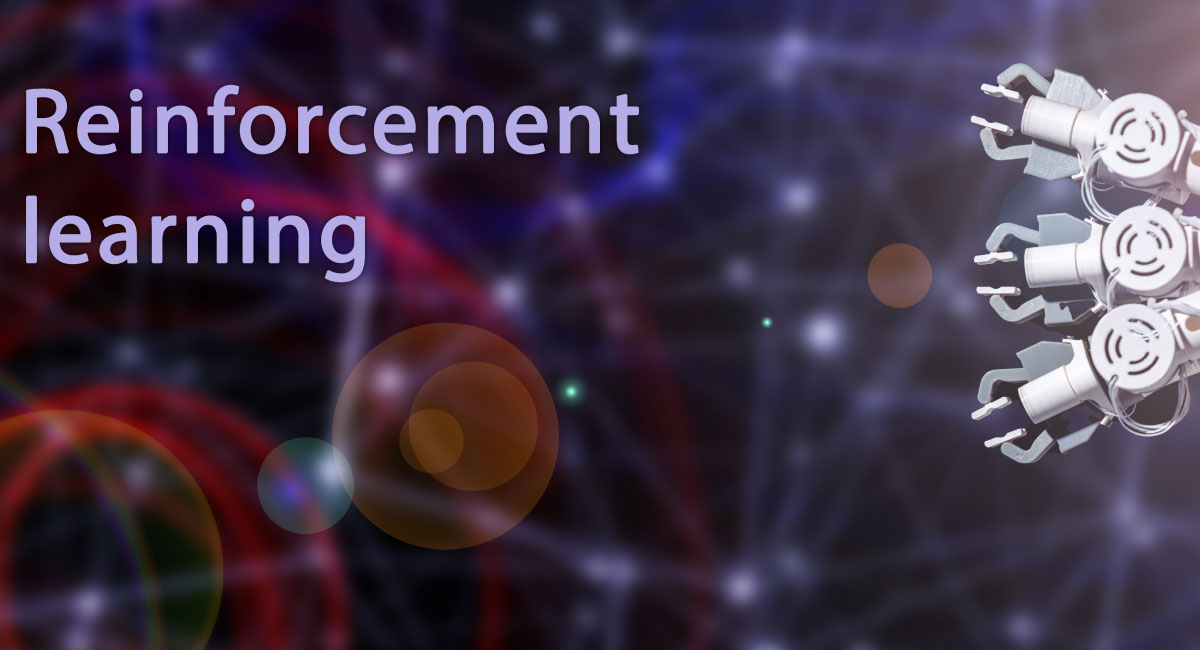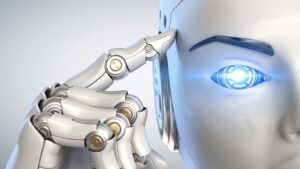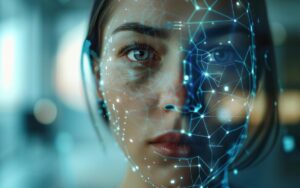Decision-making is often a tricky thing. If you make the wrong decision, you inevitably suffer consequences. Eventually, through experience, we learn to take actions that offer the best outcomes while avoiding negative results. Machines can be trained to do this, too. It’s called reinforcement learning.
This article answers the question, “What is reinforcement learning in AI?” We will define the term and show how reinforcement learning works, including its uses, benefits, and challenges. We will also explore commonly used terms in reinforcement learning and their pros and cons. We will round things out by speculating about its future and sharing an online AI and machine learning bootcamp you can take to boost your career in this exciting field.
So, let’s begin. What is reinforcement learning in AI?
What is Reinforcement Learning?
Reinforcement learning (RL) is a sub-category of Machine Learning that trains a model via trial and error to learn optimal behavior and devise the optimal solution for a problem by making a sequence of decisions.
In essence, reinforcement learning is the science of decision, optimizing AI-driven systems by imitating natural intelligence and emulating human cognition without involving human interaction or the need for explicitly programmed AI systems.
In RL, data is accumulated from machine learning systems using trial-and-error methods. Reinforcement learning employs algorithms that learn from outcomes and decide what actions to take next. After each such action, the algorithm receives feedback that helps it decide whether the choice was correct, neutral, or incorrect.
So, reinforcement learning in AI is an autonomous, self-teaching system that learns by trial and error without humans getting involved.
Also Read: Machine Learning in Healthcare: Applications, Use Cases, and Careers
Essential Terms in Reinforcement Learning
Here are some terms often encountered when working with reinforcement learning.
- Agent. The agent is the model being trained through reinforcement learning.
- Environment. The environment is the training situation that the model must optimize.
- Action. The action covers all possible steps the model can take.
- State. The state is the current position or condition returned by the model.
- Reward. The model is rewarded with points for moving in the right direction. Rewards are given to appraise a given action.
- Policy. The policy determines how an agent behaves at any time, acting as a mapping between the action and the present state.
How Does Reinforcement Learning Work?
The reinforcement learning workflow encompasses training the agent while keeping the following key factors in mind:
- Agent
- Deployment
- Environment
- Reward
- Training
Let’s understand each one in detail.
Step 1: Define and create the environment
The reinforcement process starts by defining the environment where the agent remains active. The environment can refer to an actual physical system or a simulated environment. Once you determine the environment, you can begin experimentation for the RL process.
Step 2: Specify rewards
In the next phase, you must define the reward for the agent. The reward acts as the agent’s performance metric and lets the agent evaluate the task’s quality against its goals. Additionally, offering appropriate agent rewards may require several experimental iterations to finalize the correct one for a specific action.
Step 3: Define the agent
Once you finalize the environment and rewards, you can define and create the agent that specifies the involved policies, including the reinforcement learning training algorithm. The process typically includes these two steps:
- Using the appropriate lookup tables or neural networks to represent the policy
- Selecting the suitable RL training algorithm
Step 4: Train and validate the agent
Next, you train and validate the agent to fine-tune the training policy. Additionally, you must focus on the reward structure RL design policy architecture and perpetuate the training process. Beware- reinforcement learning training is time-intensive and could be minutes to days, depending on the end application. So, you can achieve faster training for a complex set of applications by employing a system architecture where several GPUs, CPUs, and computing systems run parallel.
Step 5: Implement the policy
Policy in an RL-enabled system serves as the decision-making component. This component is deployed using C, C++, or CUDA development code. While you implement these policies, revisit the initial stages of the RL workflow. This action is sometimes necessary when optimal results or decisions aren’t achieved. The following factors may need fine-tuning, followed by retraining the agent:
- Action/state signal detection
- Environmental variables
- Policy framework
- RL algorithm configuration
- Reward definition
- Training structure
Also Read: What is Machine Learning? A Comprehensive Guide for Beginners
The Various Uses for Reinforcement Learning
Reinforcement learning is designed to optimize the rewards agents earn as they accomplish a specific task. Consequently, RL benefits several real-life applications and scenarios, including self-driving cars, surgeons, robotics, and AI bots.
Here are some critical reinforcement learning uses in our daily lives that shape the artificial intelligence field:
- Addressing energy consumption problems. As reinforcement learning algorithms become increasingly popular, RL agents without knowledge of server conditions can control physical parameters surrounding an organization’s servers. This data is acquired via multiple sensors that collect power, temperature, and other data, helping deep neural network training. Thus, it contributes to data center cooling and regulates overall energy consumption.
- Controlling self-driving cars. Vehicles need substantial support from ML models that simulate all possible scenarios or situations that the vehicle may encounter to operate autonomously in a city environment. Reinforcement learning is a superstar in these cases as these models need training in a dynamic environment, where all possible pathways are studied and sorted through the learning process. Learning from experience makes reinforcement learning the ideal choice for self-driving cars that must quickly make optimal decisions. RL methods can competently handle multiple variables like handling traffic, managing driving zones, monitoring vehicle speeds, and controlling accidents.
- Gaming. Reinforcement learning agents learn and adapt to gaming environments as they apply logic via their experiences, achieving the desired results by performing a sequence of steps. Google’s DeepMind-created AlphaGo outclassed the master Go player in Oct. 2015, for example. But, in addition to designing games like AlphaGo that employ deep neural networks, reinforcement learning agents are used for bug detection and game testing within the gaming environment.
- Healthcare. Reinforcement learning is valuable in healthcare as DTRs (Dynamic Treatment Regimes) have aided medical professionals in handling patients’ health. DTRs employ a sequence of decisions to generate a final solution. The sequential process typically involves these steps:
- Determining the patient’s live status.
- Deciding the type of treatment.
- Discovering the appropriate medication dosage based on the patient’s condition.
- Deciding dosage timings and other related variables.
Doctors can use this sequence of decisions to fine-tune their patient treatment strategies and diagnose complex diseases such as cancer or diabetes. In addition, DTRs can further help provide treatments at the correct time, avoiding complications that may arise from delayed actions.
- Marketing. Reinforcement learning helps organizations maximize customer growth and streamline business strategies to achieve long-term goals. RL in the marketing arena helps professionals make personalized recommendations to users by predicting behavior, choices, and reactions toward specific products or services. Trained bots also consider variables such as evolving customer mindset and dynamically learning changing user requirements based on behavior. So, reinforcement learning lets businesses target quality recommendations, maximizing profit margins.
- Robotics. Robotics trains robots to mimic human behavior while performing a given task. However, today’s robots don’t have social, moral, or common sense while accomplishing these jobs. In these cases, AI sub-fields like RL and deep learning (Deep Reinforcement Learning) can be combined to achieve better results. For example, deep RL is vital for robots that aid warehouse navigation while providing critical product parts, defect inspection, packaging, assembly, etc. Additionally, RL models can be trained on multimodal data that are key to identifying cracks, scratches, missing parts, and overall damage to warehouse machines by scanning images containing billions of data points. Also, deep RL helps in inventory management since the agents are trained to isolate empty containers and immediately restock them.
- Traffic signal controls. Reinforcement learning offers a possible solution to increased urbanization and rising automobile use, as RL models introduce traffic light control based on an area’s traffic status. The model considers traffic from different directions, then adapts, learns, and adjusts traffic light signals.
Reinforcement Learning vs. Supervised Learning vs. Unsupervised Learning
The below table illustrates the differences between the three primary machine learning sub-branches.
| Supervised Learning | Unsupervised Learning | Reinforcement Learning |
| Uses labeled data. | Uses unlabeled data. | Doesn’t use any predefined data. |
| External supervision. | No supervision. | No supervision. |
| Used for solving classification and regression problems. | Use to solve clustering and association problems. | Used to solve reward-based problems. |
| Maps labeled input to known output to solve problems. | Understands patterns and discovers output to solve problems. | Uses trial and error to solve problems. |
| The provided data is labeled with specified output values. | The provided data is unlabeled, with unspecified outputs. The machine makes its predictions. | The machine uses rewards and errors to learn from its environment. |
Reinforcement Learning Challenges
Although reinforcement learning algorithms have successfully solved complex problems in many simulated environments, the real world has slowly adopted them. Here are some of the implementation obstacles RL faces:
- An RL agent requires extensive experience. RL methods generate training data autonomously through environmental interaction. Thus, the data collection rate is limited by the environment’s dynamics. Thus, environments with high latency tend to slow down the learning curve. In addition, extensive exploration is required before an ideal solution can be found in complex environments with high-dimensional state spaces.
- Delayed rewards. Learning agents can trade off short-term rewards for long-term gains. Although this foundational principle makes reinforcement learning useful, it also makes it challenging for the agent to discover optimal policies. This is particularly true in environments where you must take many sequential actions before finding the outcome. Assigning credit to previous actions becomes challenging as it introduces significant variances during training.
- A lack of interpretability. Once the reinforcement learning agent has learned the optimal policy and is deployed, it acts based on experience. The reason for these actions might be hidden from an outside observer. This lack of interpretability stifles the act of fostering trust between the agent and the observer.
Also Read: Machine Learning Interview Questions & Answers
The Advantages and Disadvantages of Reinforcement Learning
Reinforcement learning has its share of pros and cons. For example:
Advantages of Reinforcement Learning
- Reinforcement learning can be employed to tackle a diverse array of problems, including decision-making, control, and optimization
- Reinforcement learning can solve complicated problems that conventional problem-solving techniques can’t otherwise solve
- RL models can correct errors that happen during a training process
- Reinforcement learning can handle non-deterministic environments, meaning the actions’ outcomes aren’t always predictable. This is especially helpful in real-world applications where the environment is uncertain or could change over time.
- Reinforcement learning is a flexible problem-solving approach that can improve performance when used in conjunction with additional machine learning techniques, like deep learning.
Disadvantages of Reinforcement Learning
- There are better choices than reinforcement learning for solving simple problems
- Reinforcement learning requires a lot of data and computation
- Reinforcement learning highly relies on the quality of the reward function. The agent might not learn the desired behavior if the reward function is poorly designed
- Reinforcement learning can be challenging to debug and interpret. It’s only sometimes apparent why a given agent acts in a certain way, potentially making diagnosing and resolving issues more difficult.
What is the Future of Reinforcement Learning?
Deep reinforcement learning employs deep neural networks to model the value function (called “value-based”), the agent’s policy (known as “policy-based”), or both (“actor-critic”). Before the widespread success of deep neural networks, data scientists had to engineer complex features to train an RL algorithm, meaning reduced learning capacity and thus limiting the scope of reinforcement learning to only simple environments. With deep learning, however, models can be built using millions of trainable weights, thus freeing the user from redundant and tedious feature engineering. Instead, relevant features are automatically generated during training, enabling the agent to learn the best policies in complex environments.
Traditionally, reinforcement learning in AI is applied to one task at a time, with each task learned by a separate RL agent. These agents don’t share knowledge, making learning complex behaviors, like driving a car, slow and inefficient. Problems with a common information source, have related underlying structures, and are interdependent can significantly boost performance by allowing multiple agents to work together. A3C (Asynchronous Advantage Actor-Critic) is an exciting new development in this area, where multiple agents concurrently learn related tasks. This multi-task learning scenario is gradually driving RL closer to Artificial General Intelligence (AGI), where meta-agents learn how to learn, making problem-solving more autonomous than ever.
Do You Want Training in Artificial Intelligence and Machine Learning?
Artificial Intelligence and Machine Learning are dynamic, exciting fields that offer much potential. If these disciplines sound like something you would like to explore further, consider this comprehensive program in AI and machine learning.
This online course delivers a high-engagement learning experience that teaches Python, Natural Language Processing, Machine Learning, and much more. According to Indeed.com, machine learning engineers earn an average yearly salary of $166,572. So, if you want to move into a more challenging, cutting-edge career that provides security and generous compensation, check out this online AI/ML bootcamp and prepare your skills to face the exciting challenges of today’s Machine Learning revolution.
FAQ
Q: What are some examples of reinforcement learning in AI?
A: Examples include:
- Self-driving cars
- Industry automation
- Improved Natural Language Processing (NLP)
Q: What are the benefits of reinforcement learning in AI?
A: Benefits include:
- Quicker understanding
- Reduced expenses
- Better decision making
Q: What is the importance of reinforcement learning?
A: This technology lets computers learn from vast data sets faster and with better results, a vital function in our increasingly data-saturated world.
You might also like to read:
How to Become an AI Architect: A Beginner’s Guide
How to Become a Robotics Engineer? A Comprehensive Guide
Machine Learning Engineer Job Description – A Beginner’s Guide






